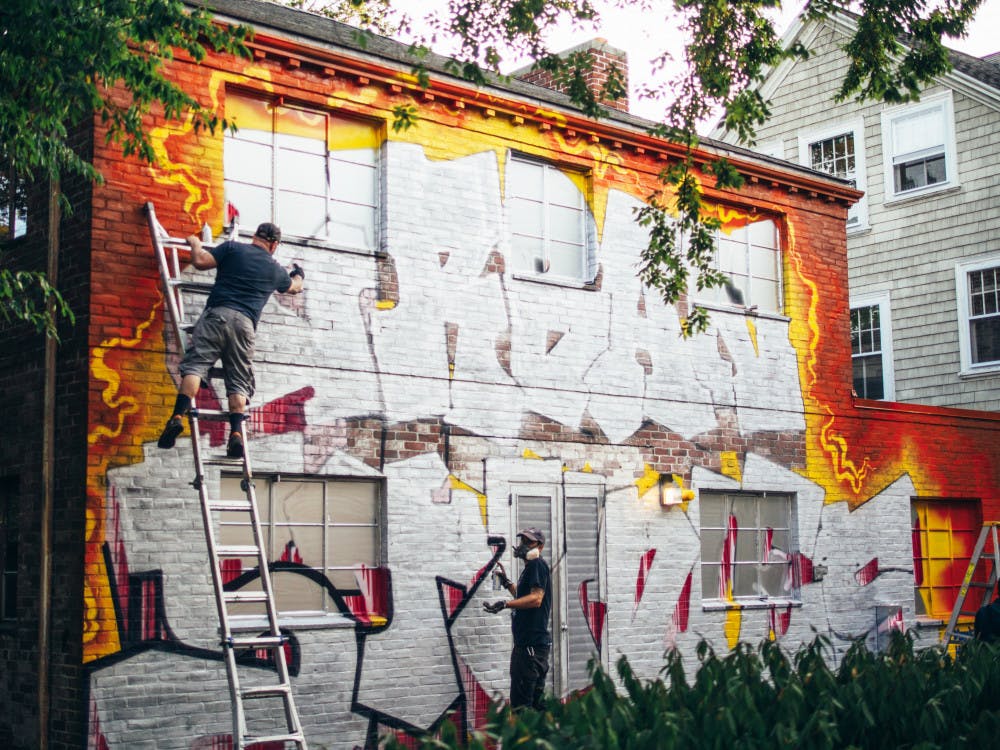When Gregory Pennisten coated the facade of 29 Manning Walk with bright graffiti Friday, he didn’t have to work under cover of night or worry about University backlash. In fact, the local artist was invited in to help publicly commemorate the relocation of the Department of Urban Studies.
Surrounded by students and faculty members who had gathered to watch him work, Pennisten sprayed the brick building in an homage to urban development.
The “Urban Studies Paint-Out” was organized by Dietrich Neumann, professor of history of art and architecture and chair of the urban studies department, in tandem with Stefano Bloch, a postdoctoral fellow in urban studies. Bloch enlisted Pennisten’s help to create a graffiti mural covering the now-vacant facility as a “send off” to the building, Neumann said.
The building at 29 Manning is slated for demolition in early November to make way for the new engineering facility, Neumann said, adding that the urban studies department has already relocated to its new home in Maxcy Hall.
For more than five hours on Friday, starting at 4 p.m., a crowd watched Pennisten and artist Nick Guilbert cover the facility with a mural reading “Urban Studies to Maxcy” — an homage to both the department’s new and old homes. The design of the mural was inspired by New England style graffiti dating to the early ’90s, Pennisten said. The legible, clearly formed letters and their simple color palette are particularly distinctive of this era, he added.
Pennisten said it was an “honor and a privilege” to be able to work on a building with the “architectural and historical significance” of 29 Manning.
The building was originally the home of architects Peter and Margaret Geddes. The building also doubled as an office for Peter Geddes and his partner, Albert Harkness ’1842, for several years before being converted into a space for the urban studies department in the ’90s.
Bloch called the event a “non-confrontational marriage of subcultural expression and Brown’s ownership of the land and the buildings.”
“It’s a nice moment where all of the dogmas and ideologies that are for or against graffiti or for or against the institution that is Brown all fall away,” Bloch said. “Members of a subculture and a powerful institution come together for the enjoyment of students.”
The demolition holds special significance for this year’s senior urban studies concentrators, who have used the facility throughout their time at Brown. After a quick lesson from Bloch, current urban studies concentrators signed their names in spray paint on the finished mural.
Malikah Williams ’16 said it was “very special” to be able to sign her name on 29 Manning.
“The building represents a lot to me because this is where I started to seriously think about urban studies,” Williams said. “It’s where I formed my identity as an urban studies concentrator … When I think of urban studies, I think about this building.”





